Amsonia spp.
Wherever it is in the garden, Amsonia (aka blue star) will hold interest.
In bloom or not, this sun-loving perennial stands tall and hardy in most conditions, and while it produces thick and vigorous clumps, it rarely becomes an invasive annoyance.
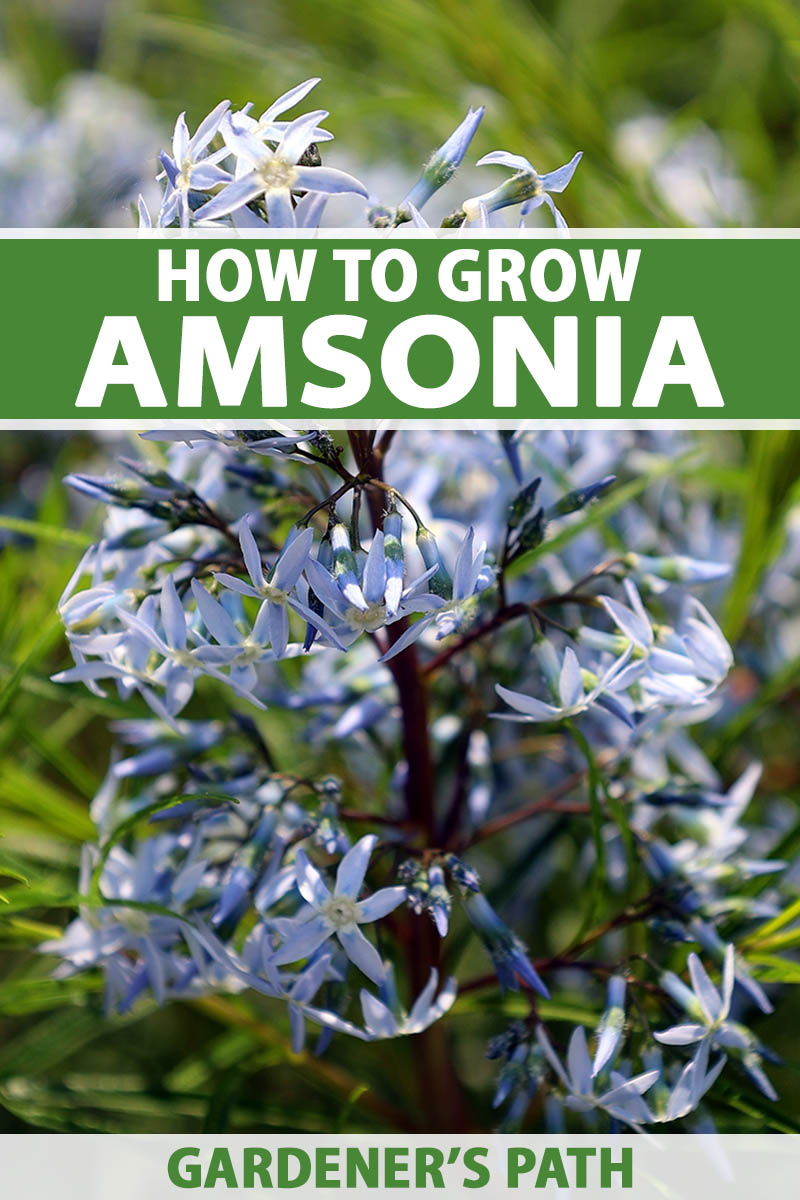
We link to vendors to help you find relevant products. If you buy from one of our links, we may earn a commission.
All in all, if you can grow blue star, you should! Here’s a handy look at everything we’re about to cover up ahead so you can pinpoint what you’re looking for:
What You’ll Learn
If anything were to offer some competition with my love of gardening, it’s fantasy worlds and stories.
I have an absurd affection and appreciation for magical settings and tales, and when those worlds collide it’s a wonderful thing.
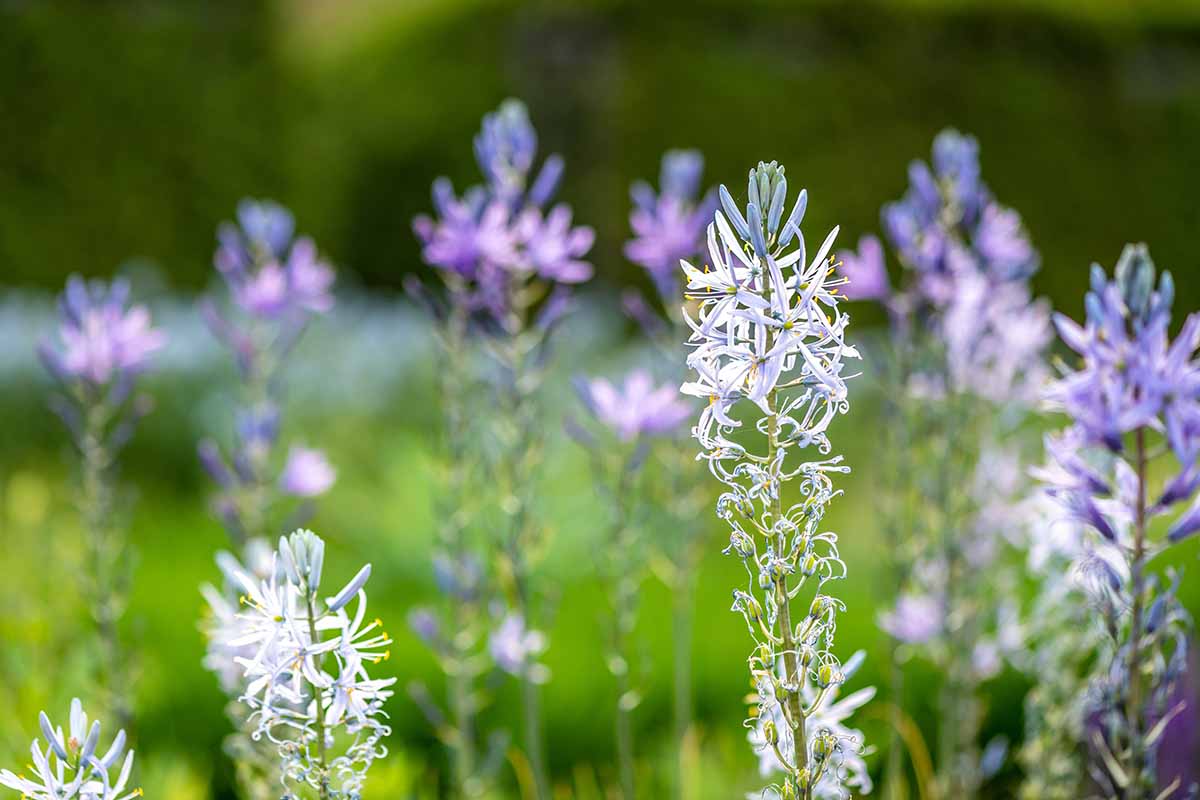
Wild and weird plants are my favorites, and Tolkien’s vast and tediously detailed setting of Middle Earth is at the top of the pile.
So when I first saw Amsoniamany years ago, I thought immediately of the impromptu poetry Samwise Gamgee puts together in the aftermath of Gandalf’s death in Moria:
The finest rockets ever seen They burst in stars of blue and green Or after thunder, silver showers Came falling like a rain of flowers
Talk about a looker of a plant! A tall and almost spindly specimen growing up about three feet in height topped with a periwinkle spray of flowers.
It seemed like something every hobbit would grow in their garden, and every hobbit loves gardening, so obviously The Shire would be densely covered in amsonia, right?
I love lots of plants but they’re all my favorites in different ways, and for different reasons. Amsonia gives me a sweet taste of nostalgia every time I see it.
If you didn’t know gardeners could be nerds too, well, here’s the proof. But enough about that. What is this funky looking plant that makes grown men dream about hobbits and wizards?
What Is Amsonia?
Blue star is a native perennial plant that grows upright in tight clumps.
Its original range is the eastern United States so it’s a great fit for those “Beast Coasters” who love native gardens. But it will happily grow on the West Coast (Best Coast?) as well.
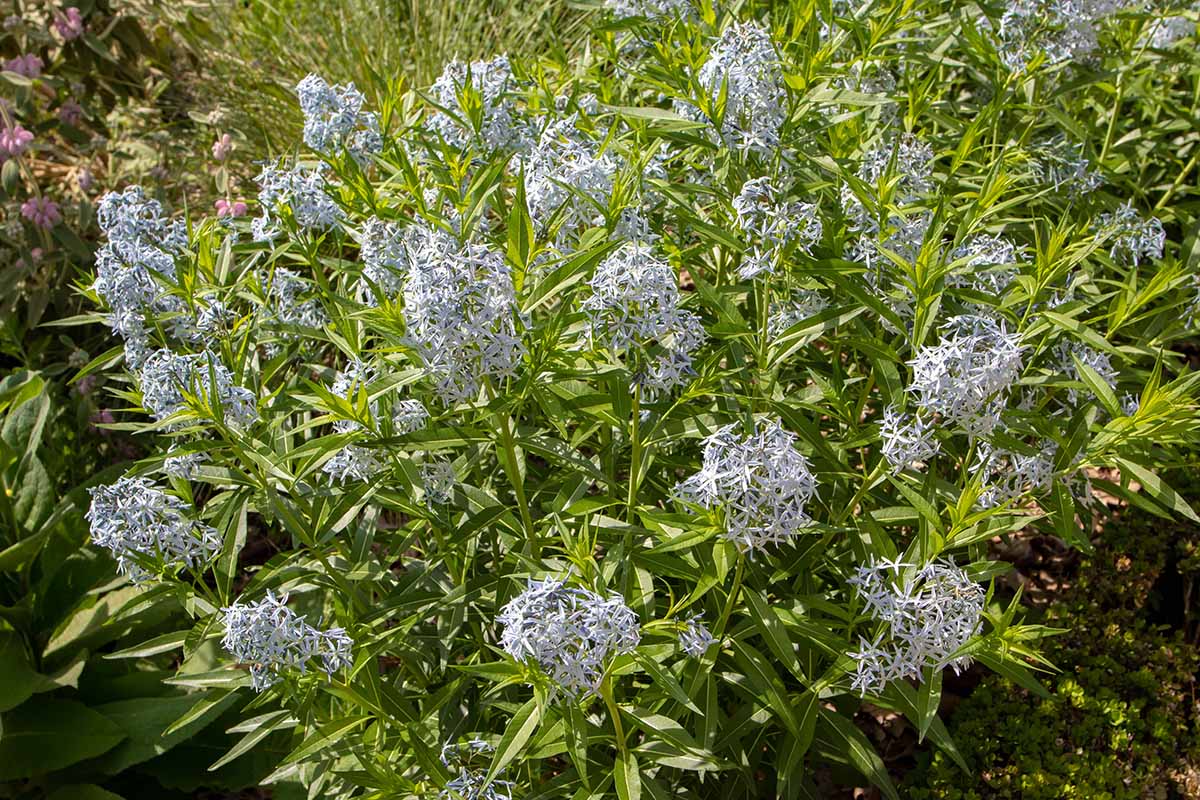
There are about 20 species in the Amsonia genus, all with similar flowers.
The most commonly cultivated species is A. tabernaemontana but you may also find A. ciliata, A. hubrechtii (aka Arkansas blue star), and A. illustris.
It usually attains about three feet in height but I’ve seen a few healthy and happy gardens supporting four-foot-tall plants.
A thin and narrow stem supports dozens of leaves running the length of the plant. At the top is a cluster of star-shaped flowers that transition into seed pods after they’ve finished blooming.
These perennials require full sun to be at their best but they can grow in other conditions. If yours aren’t getting lots of sun they will likely need to be staked to prevent flopping over.
This relatively hardy addition to the garden works in almost any design. It prefers never to dry out and this can limit its planting companions and placement.
But in the right conditions? Forget about it. Amsonia will grow happily with a bare minimum of care and offers about three and a half seasons of interest.
Amsonia Plant Propagation
Once established, blue star grows into a healthy plant, but it never becomes an aggressive feature in the garden.
It can spread via seeds but produces an easily identified seedling that can be yanked out of places it’s not supposed to be.
From Seed
You can either purchase seeds or collect them directly from a plant near the end of summer.
My best gauge for knowing when to harvest amsonia seeds is based on how I’m feeling about the summer heat.
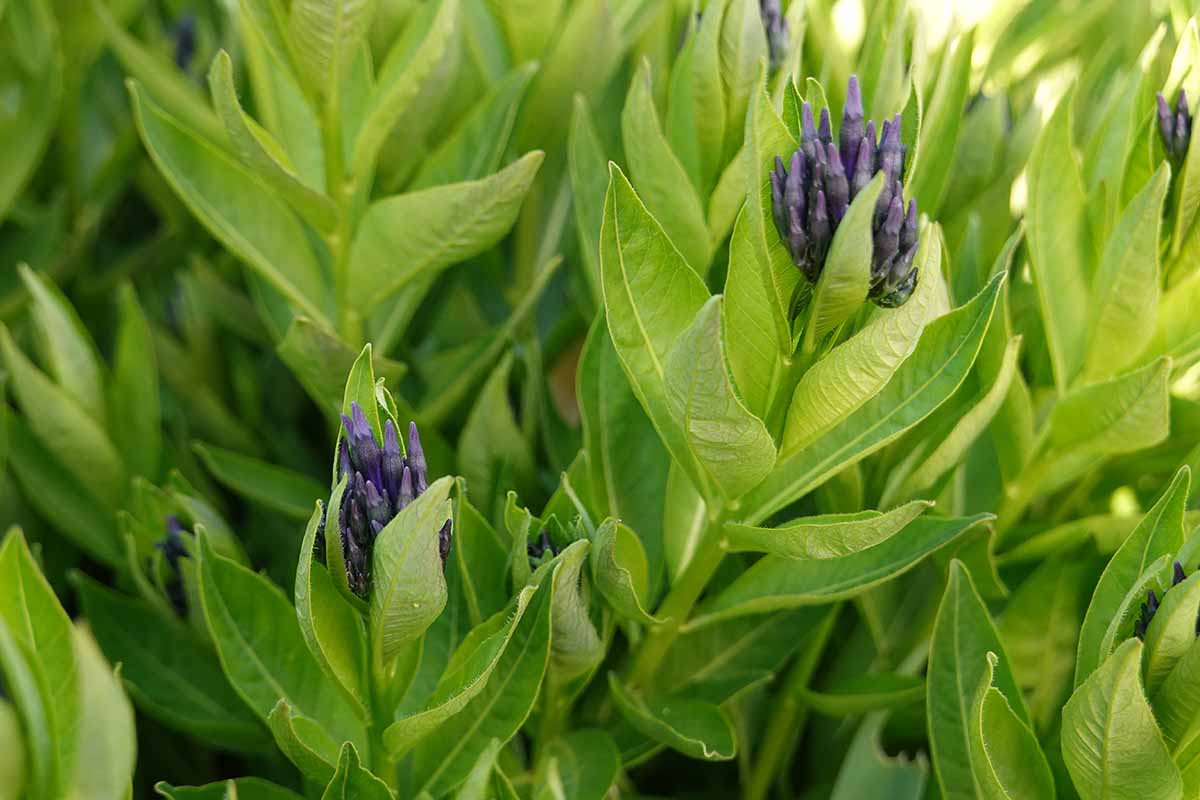
You know the very end of summer when fall is right around the corner, but it’s still hot at night and you’re just about melting for that cool autumn weather?
That’s my personal barometer for when I want to harvest seeds from plants like amsonia.
Once the flowers have faded, allow the seed pods to dry on the plant before collection.
Amsonia seeds need to be cold stratified before planting. If you have purchased seeds, check your seed packet to determine whether or not they have been cold stratified.
You can keep the seeds in some damp compost in your refrigerator – they need at least three weeks with temperatures ranging from 30 to 40°F.
After they have been cold stratified, prepare your containers or seed trays. Fill with a good seed-starting mix, and sow three or four seeds per cell in a seed tray.
If you’re using individual containers, sow four seeds in a four-inch pot. I wouldn’t recommend planting amsonia seeds in anything larger than a four-inch container.
Cover with a thin layer of soil, and water with a mister or spray bottle to avoid dislodging them. Maintain even moisture in the soil while you wait for the seeds to germinate.
If you have the space for it, you could also sow seeds directly outdoors and let Mother Nature take care of the cold-stratification process. Give them a light covering of soil and keep them protected from dripping rooflines and strong winds.
It can take 10 weeks for the seeds to germinate, so once sprouts appear, celebrate! Watch your little seedlings stretch and grow, and look for the strongest plant growing in each cell or container.
Once the seedlings have developed their third set of true leaves, snip the weaker-looking seedlings, leaving a single strong seedling in each cell of the tray or four-inch container.
Layering
Amsonia readily transplants itself, if you can believe it.
When a stem gets knocked down by an errant footfall or some carelessly piled mulch, it will begin to take root where the woody stem is touching, or buried in, the ground.
After a few weeks you can use a pair of pruners or a sharp knife to separate the new plant from the original one, then dig up and transplant the new little fella to a new home.
By Division
If your blue star is large and looking a little rough and beat-up, we’ve got good news.
You can divide your amsonia! In either early spring or any time in the fall, you can dig up your blue star from its home.
Break away some soil from the roots so you can see what you’re working with. Use a sharp blade or a sturdy pair of pruners to cut it into sections.
Plant the divisions where you like in your garden – or give them to your friends and neighbors – immediately after dividing.
Give them a good drink, and give them another drink every few days for about a week. If it’s very warm or dry when you transplant you can stretch this supplemental watering out over two weeks.
Transplanting
Amsonia can be found in garden centers and it is as easy to plant as any other perennial.
The stems can be a little sensitive to damage and rough handling, but besides exerting a bit of extra caution when handling the plant, you don’t need to worry about any special needs.
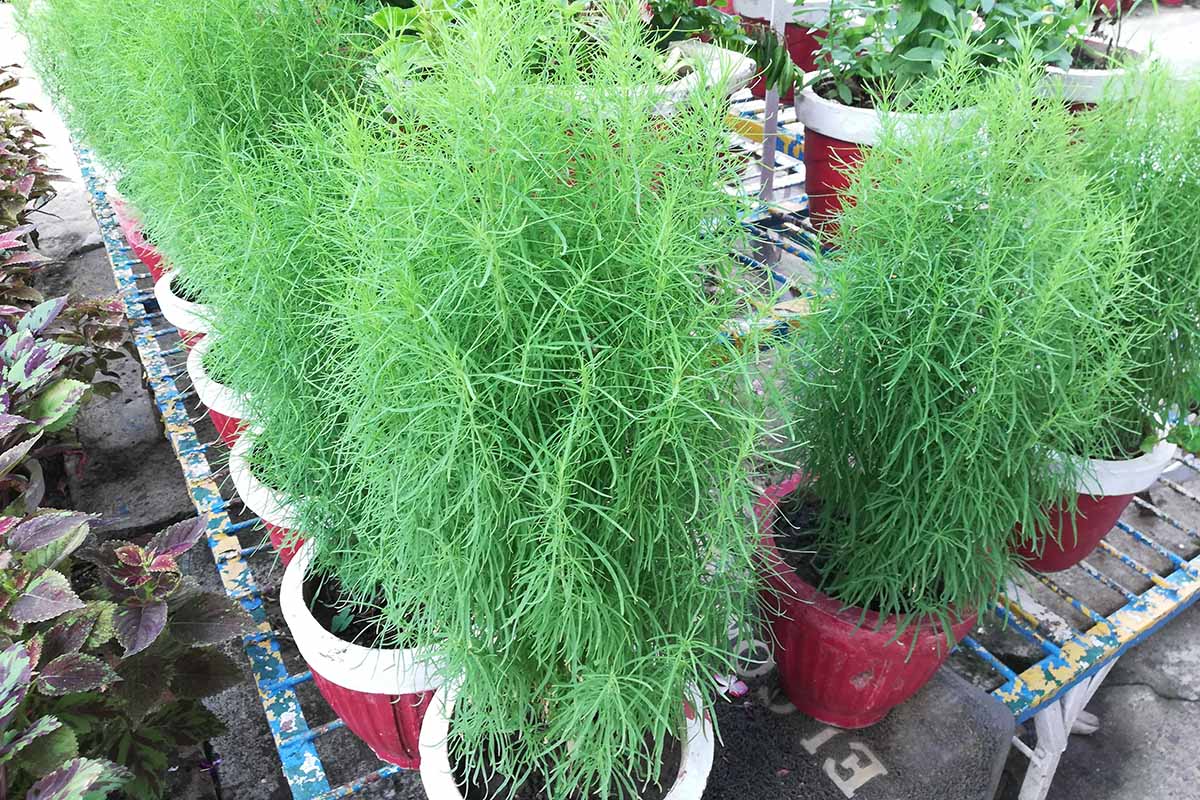
Containerized blue star ready for planting.
Dig a hole slightly wider and deeper than the root ball of your plant. Pop the plant out of the container and break up the bottom inch of soil.
If the plant is very rootbound you should work to untangle the roots; you can simply slice the root ball with a garden knife to tear the roots up.
Mix some of the soil in the pot with the soil from the hole you dug.
Pop the root ball into the hole and backfill with soil. You want the top of the rootball to be slightly higher than the surrounding soil.
Your blue star will naturally settle a little lower, but these plants can have a difficulty getting established if they’re positioned too low at planting time.
How to Grow Blue Star Flowers
This is a plant that wants to be left alone after it is planted, minus a little maintenance in late winter or spring and some regular watering.
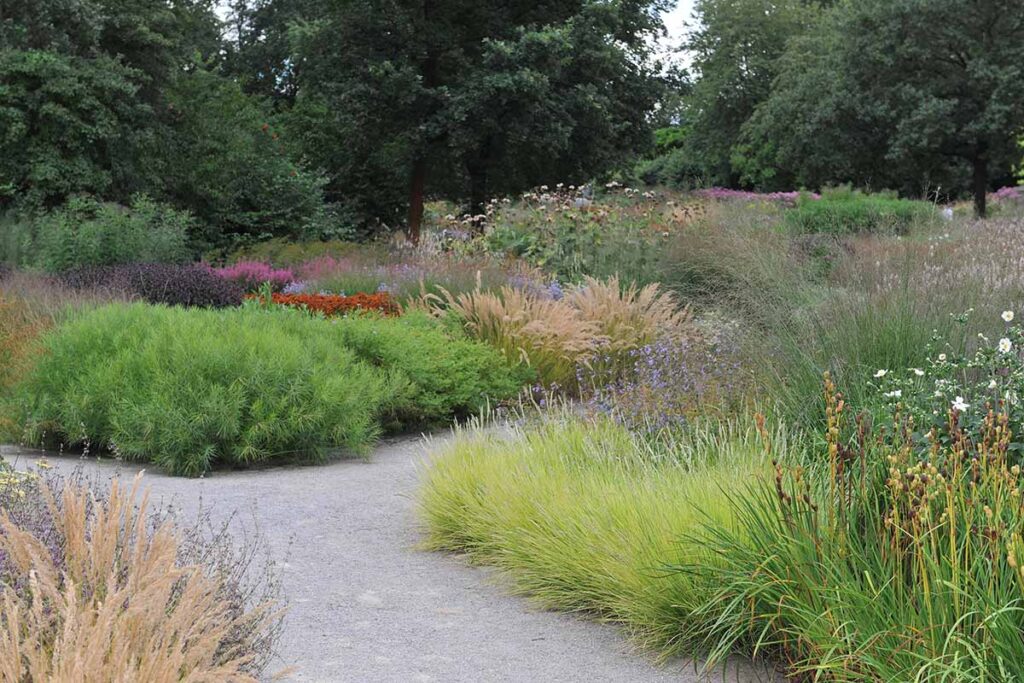
Keep it watered well, don’t fuss with fertilizers, and keep an eye on any local competition from weeds or other more aggressive plantings.
Aim for your amsonia to receive about an inch of water every week, increasing or decreasing watering based on how dry or wet the weather has been.
A Light Feeding Is Plenty
Should you fertilize your amsonia plants? That’s a good question.
In my experience, plants like blue star don’t need or even benefit from regular applications of fertilizer. A yearly dressing of compost or well-rotted manure is all these guys need.
I layer the area around the plant with about a quarter-inch of compost. Too much food, and blue star grows leggy and floppy.

Two exceptions I think are worth mentioning are when you’ve just divided your plants, or when your transplants are starting to show really promising growth.
At this stage, I’ll give the plants four half-strength applications of a water soluble fertilizer over the course of the growing season.
If the fertilizer recommends two scoops per gallon of water, I use one scoop per gallon of water.
This has been my preferred feeding method when working with transplanted perennials and it has consistently provided the most reliable results.
Soil and Climate Needs
Amsonia likes as much sun as you can throw at it.
I’ve seen this used as plant material in the grassy sections of highway on- and off-ramps, and the healthiest and happiest amsonia I ever saw was used as a filler plant in a sun-baked meadow.
It can grow in partial sun, but blue star tends to really reach for the light in these conditions and it’s likely to require staking or some other kind of support.
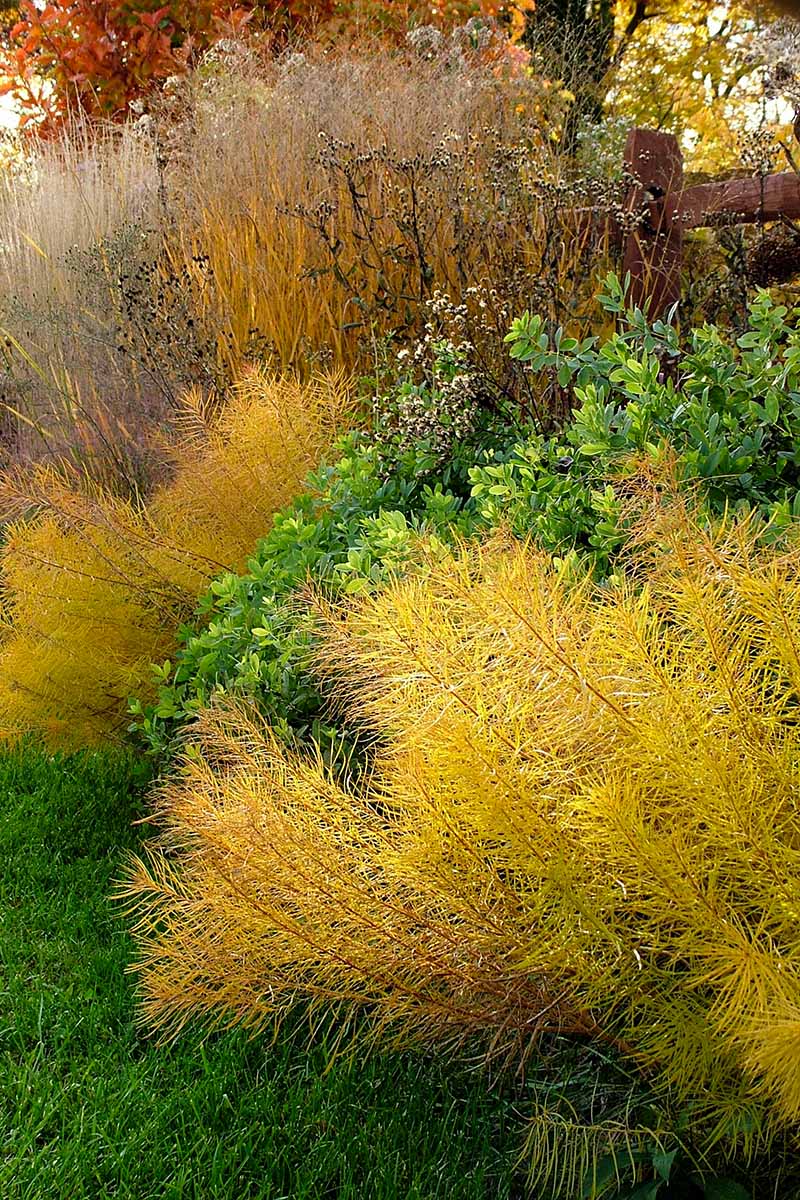
As far as the quality of soil, this plant isn’t particularly picky, but it does not tolerate drought for long periods of time.
Amsonia is happiest when it’s getting water regularly, so while it will grow in a variety of conditions, it really seems to favor more loamy soil that retains moisture without turning swampy.
It isn’t a very aggressive plant. Although it can really take off when it is established, it can be easily pushed out by stronger competition or invasive neighbors.
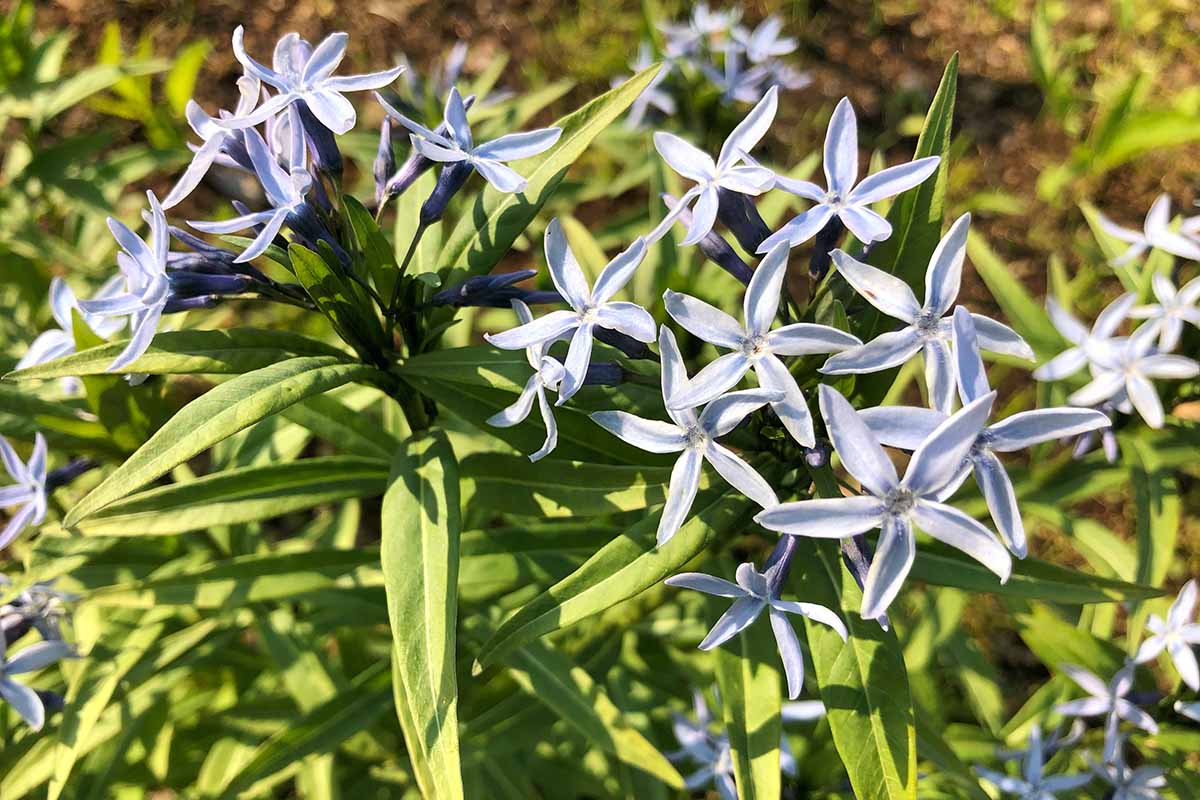
This is why I think amsonia is best in mass plantings where it can grab hold of a few square feet to really establish itself.
Keep up with the weeding while the plants are young to minimize competition while they become established.
Growing Tips
- Plant in full sun.
- Keep the plant regularly watered.
- Keep more aggressive growers on the other side of the garden because amsonia doesn’t compete well.
Maintenance
Amsonia requires very little maintenance. It can really be left alone entirely if you like a less formal and more natural garden. The new growth will work its way through the old before long.
Blue star has few issues with pests of any kind so it isn’t likely to be infested and hold onto pests from the previous year.
That means you have little to worry about in terms of end-of-season cleanup to manage unwanted insects.
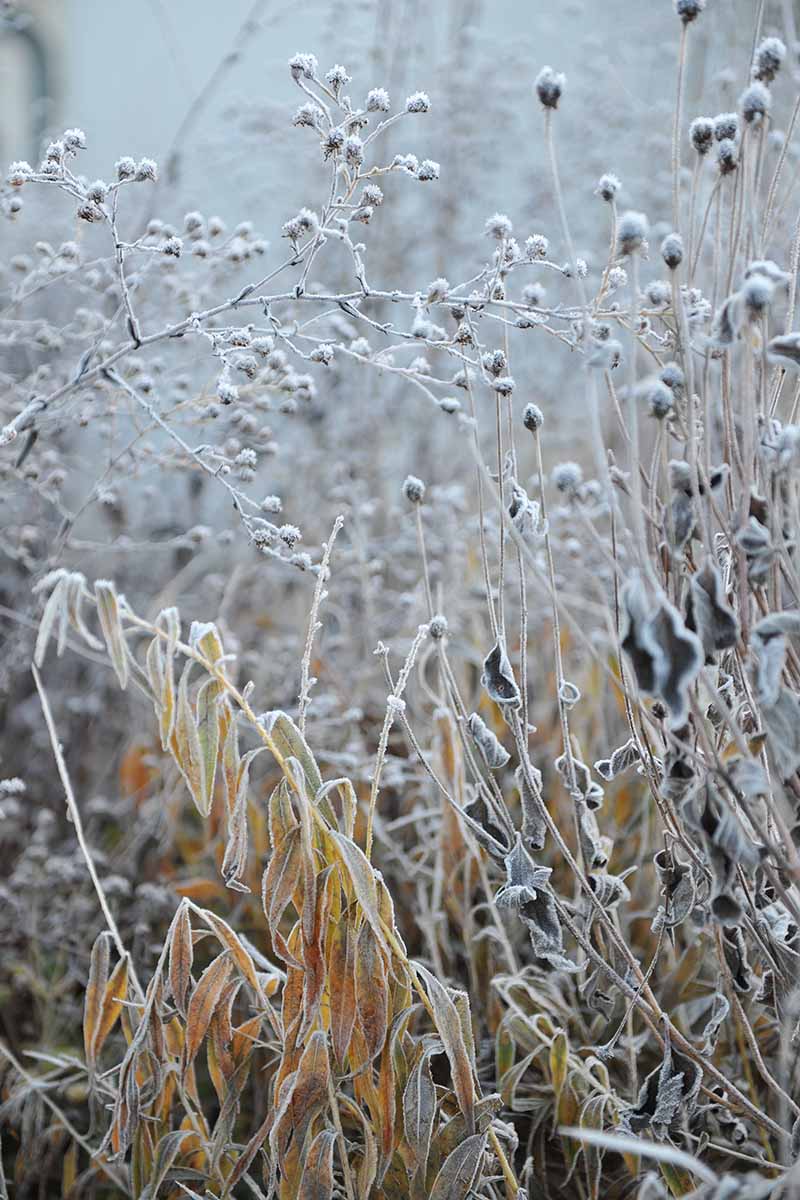
But if you prefer a more tidy look, that works! Cut back your amsonia in the late fall or in mid spring.
Here’s my personal barometer at work again: I cut back plants like blue star when it’s muddy out and the air is refreshingly brisk.
Amsonia Species and Cultivars to Select
In addition to the species plants, a number of hybrids and cultivated varieties are available. Here are a few of my favorites:
Blue Ice
A. tabernaemontana ‘Blue Ice’ features deep blue buds that open up into cute, periwinkle blue star-shaped flowers.
‘Blue Ice’ reaches a mature height of 12 to 16 inches, with a spread of 18 to 24 inches. In fall, the deep green foliage transforms to bright yellow.
You can find ‘Blue Ice’ available from Nature Hills Nursery in #1 containers.
Starstruck
‘Starstruck’ is a hybrid cross between A. tabernaemontana and A. rigida.
Introduced to market by Walters Gardens, in Michigan, this cultivar features an upright and rounded growth habit, reaching 20 inches tall and up to 36 inches wide.
The clusters of light blue flowers are offset by olive green foliage that turns yellow in the fall.
You can find plants in #1 containers available from Nature Hills Nursery.
String Theory
A. hubrichtii ‘String Theory’ is an Arkansas blue star cultivar, also bred by the pros at Walters Gardens.
With pale blue flowers and an upright, dense habit, ‘String Theory’ achieves a height of 18 to 22 inches and a spread of 32 to 36 inches.
The deep green foliage transforms to bright orange come fall.
You can find ‘String Theory’ available at Burpee.
Managing Pests and Disease
Pest issues are rare, so it’s unlikely that you’ll have to deal with any type of insect infestation.
Blue star produces a toxic white latex, and it is naturally resistant to critters. While a hungry deer or rabbit (or sasquatch, we can’t forget them!) will eat anything when it’s really hungry, amsonia is at the bottom of the list.
There is an interesting interaction to note with a butterfly known as the coral hairstreak (Satyrium titus). The larvae have developed a resistance to the toxic liquid produced by amsonia and these caterpillars can consume the plant without harm.

But hey, that’s okay! We love milkweed for feeding and housing monarchs, so let’s give the coral hairstreak’s relationship with amsonia a little love too.
As for pathogens, it does have a tendency toward issues with rust.
Rust is a familiar sight in the garden and is easily identified by its rusty appearance on plant leaves and stems. The best cure for this fungal disease is to wait it out until late fall, then do a diligent garden cleanup.
Remove and destroy all infected foliage and dispose of it in the trash – don’t compost it. Give the area a nice cleaning with a rake or leaf blower, and that’s it.
Best Uses for Blue Star Flowers
Amsonia is really at its best when it’s planted en masse, in large clusters.
Individual plants in a busy garden are lovely and very appealing as specimens, but blue star really thrives when you can dedicate a larger chunk of your garden to it.
It has the perfect texture for adding some soft lushness to a planting area, and helps round out straight edges in a garden while accentuating the curves found in informal gardens.

I’m a huge fan of heuchera, and pairing it with blue star is a match made in heaven.
I’m trying to encourage my uncle to grow a short amsonia hedge at his humble lake cottage to use as a polite border with the neighboring property. It pairs extremely well with ornamental grasses and low shrubs too.
One property where I worked had created an “edible meadow” featuring a variety of berries and fruits mixed in with ornamental perennial plantings.
Amsonia always looked perfectly at ease with the wild berry vines and I think they’re a great pairing, even if it’s unconventional. There were some fig trees in that meadow, too, and amsonia seemed quite happy clustered around those short trees.

In the fall, amsonia develops this stellar orange color that practically glows in the right light. It’s an excellent choice in your garden if you only use it for that autumn foliage and nothing more.
I’ve seen it paired well with other meadow perennials like black-eyed Susan and echinacea, and even one unusual design that utilized yellow- and red-twig dogwood with Solomon’s seal and ajuga.
I wish I had an opportunity to collect photographs from that garden, but the owner was politely firm about maintaining his privacy and didn’t allow pictures to be taken. What a shame!
Quick Reference Growing Guide
| Plant Type: | Perennial flower | Flower / Foliage Color: | Periwinkle blue/light, airy green (summer), honey-yellow (fall) |
| Native to: | United States | Tolerance: | Poor soil, part sun, some drought |
| Hardiness (USDA Zone): | 3-9 | Maintenance: | Low |
| Bloom Time/Season: | Late spring | Soil Type: | Loamy |
| Exposure: | Full sun | Soil pH: | 6.0-7.0 |
| Spacing: | 24-36 inches | Soil Drainage: | Well-draining |
| Planting Depth: | ¼ inch (seeds), same depth as root ball (transplants) | Attracts: | Pollinators, coral hairstreak butterfly |
| Height: | 1.5-3 feet, 4 feet or more in ideal conditions | Uses: | Beds, borders, meadows |
| Spread: | 1.5-3 feet | Family: | Apocynaceae |
| Water Needs: | Moderate | Genus: | Amsonia |
| Common Pests and Diseases: | Aphids; rust, root rot | Species: | Ciliata, hubrichtii, illustris, rigida, tabernaemontana |
The Amsonia Ambrosia
We’ve taken a gander at this pretty, easy-to-grow native perennial, and talked about its general resistance to disease and pests.
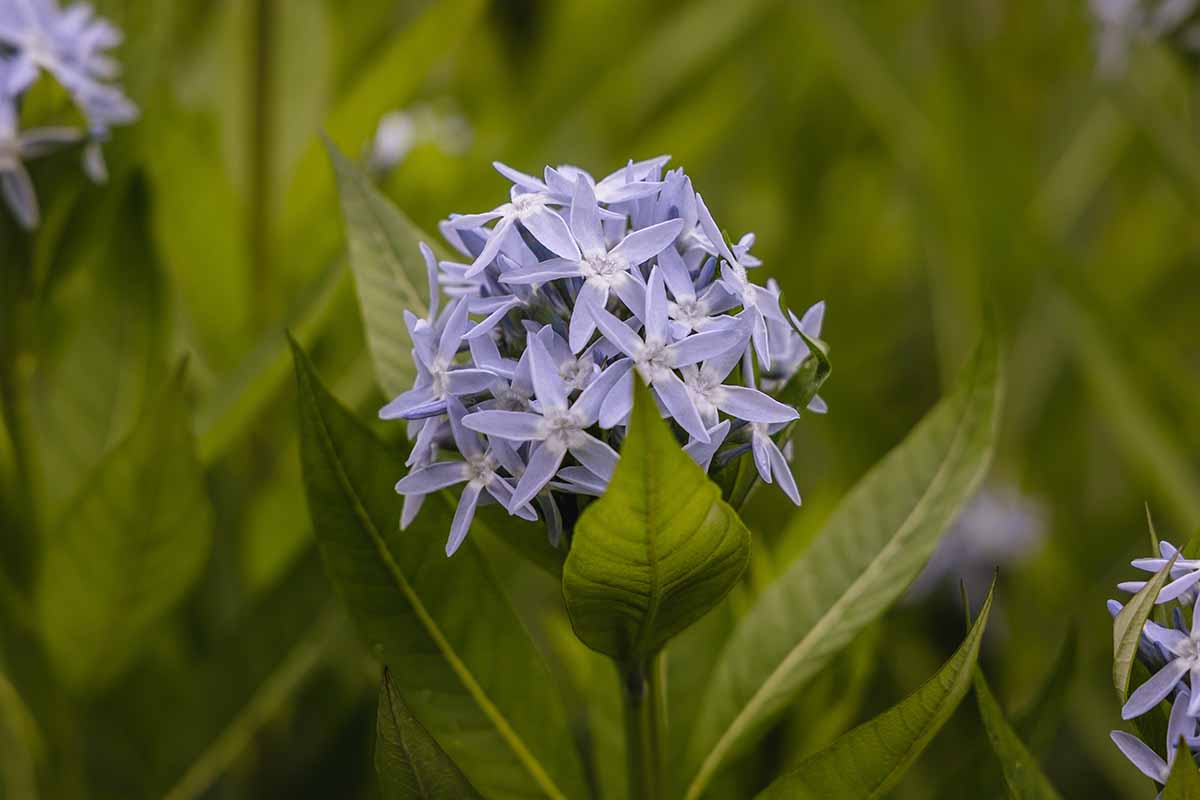
Now you’re well equipped to get started growing blue star from seed, or plants you purchase at the garden center.
We’ve also talked about my unabashed affection for the Lord of the Rings, and my personal barometer for gauging when to do what in the garden.
It works, I tell ya!
Are you growing amsonia? Let us know in the comments section below and feel free to share your photos!
And for more information about growing flowers in your garden, check out these guides next:

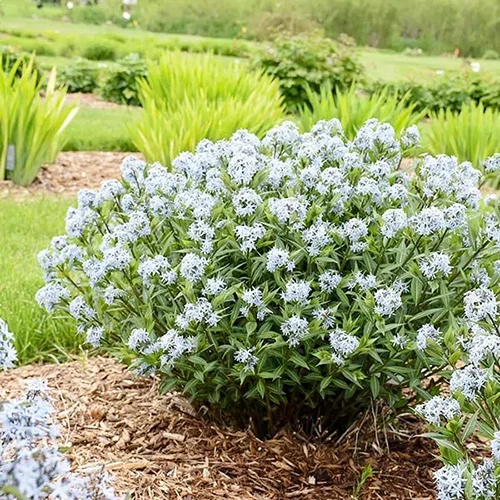
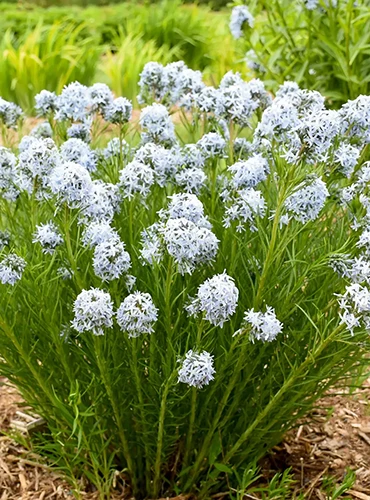
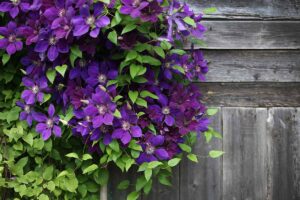

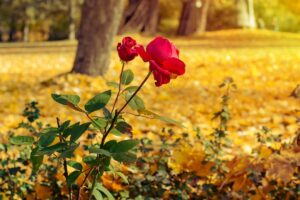
Just wanted to say, what a fun article thanks
Thanks for reading, Rebekah!